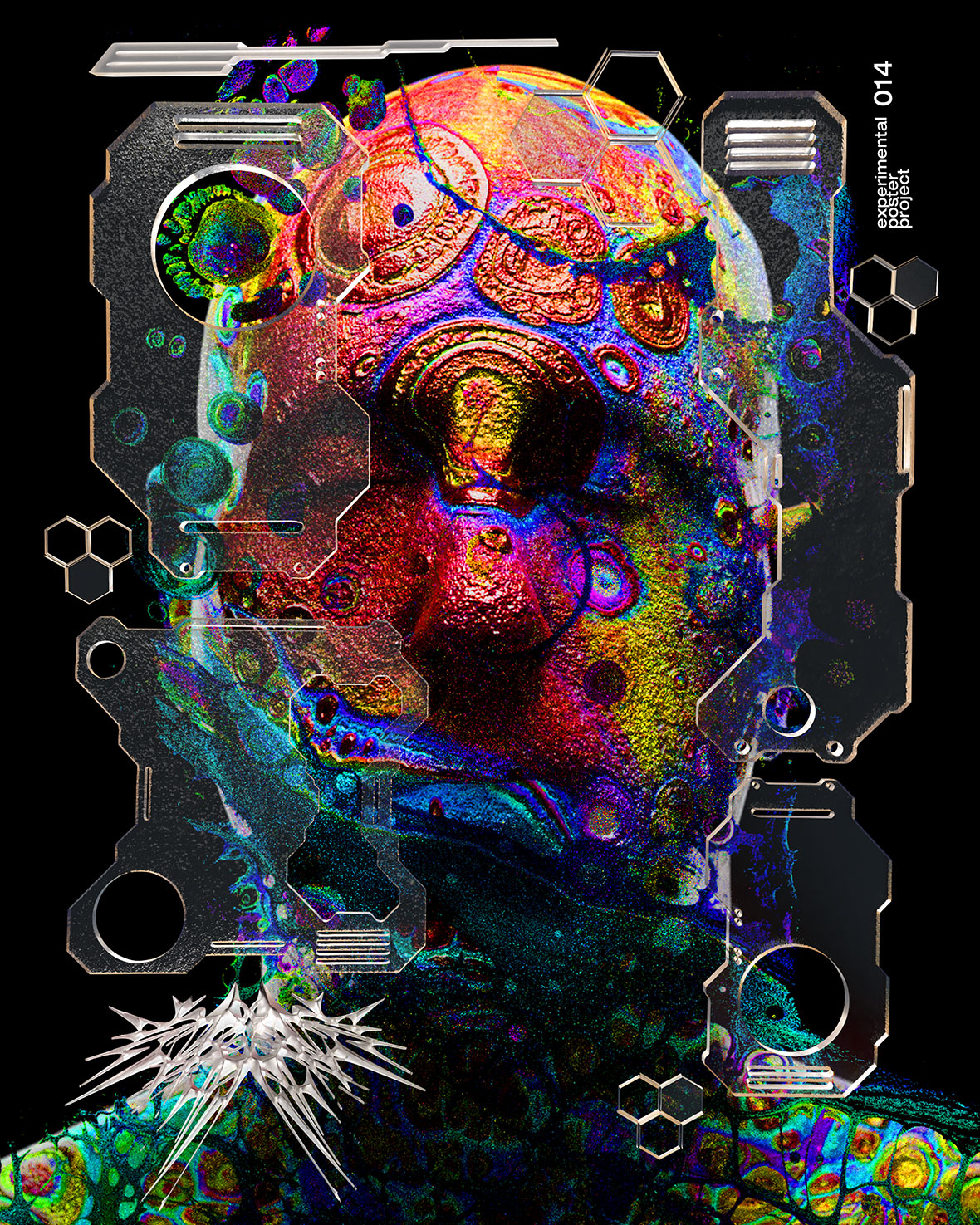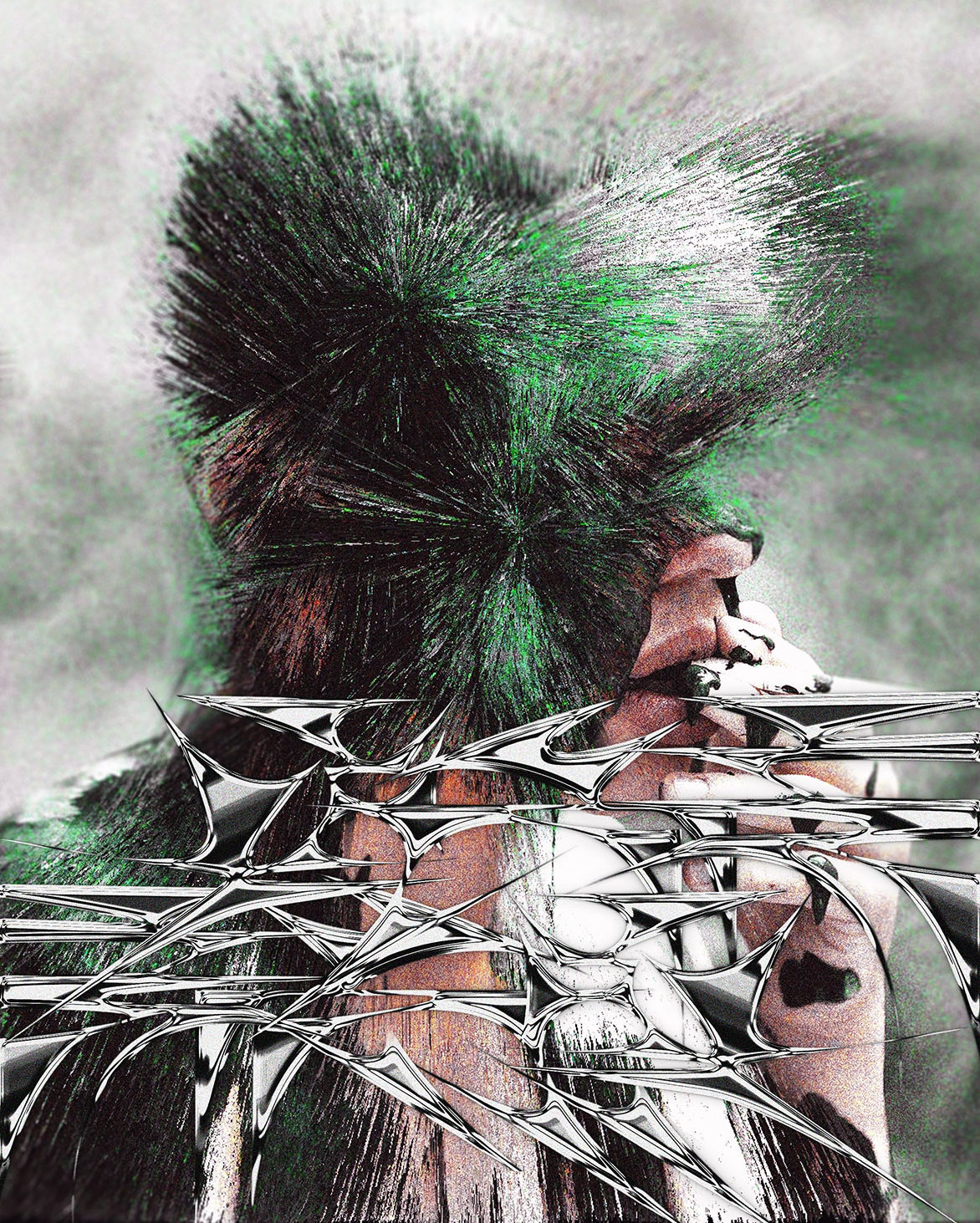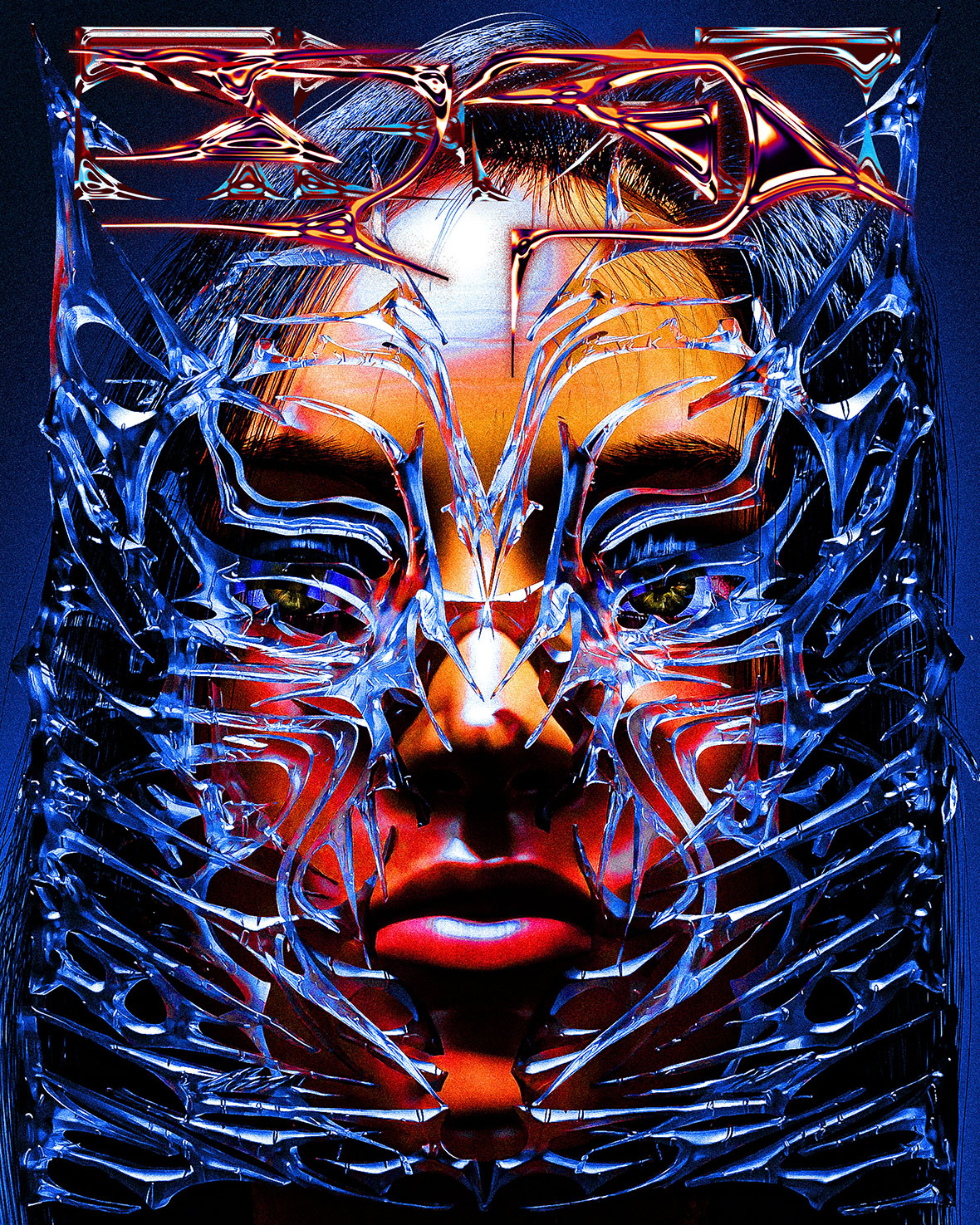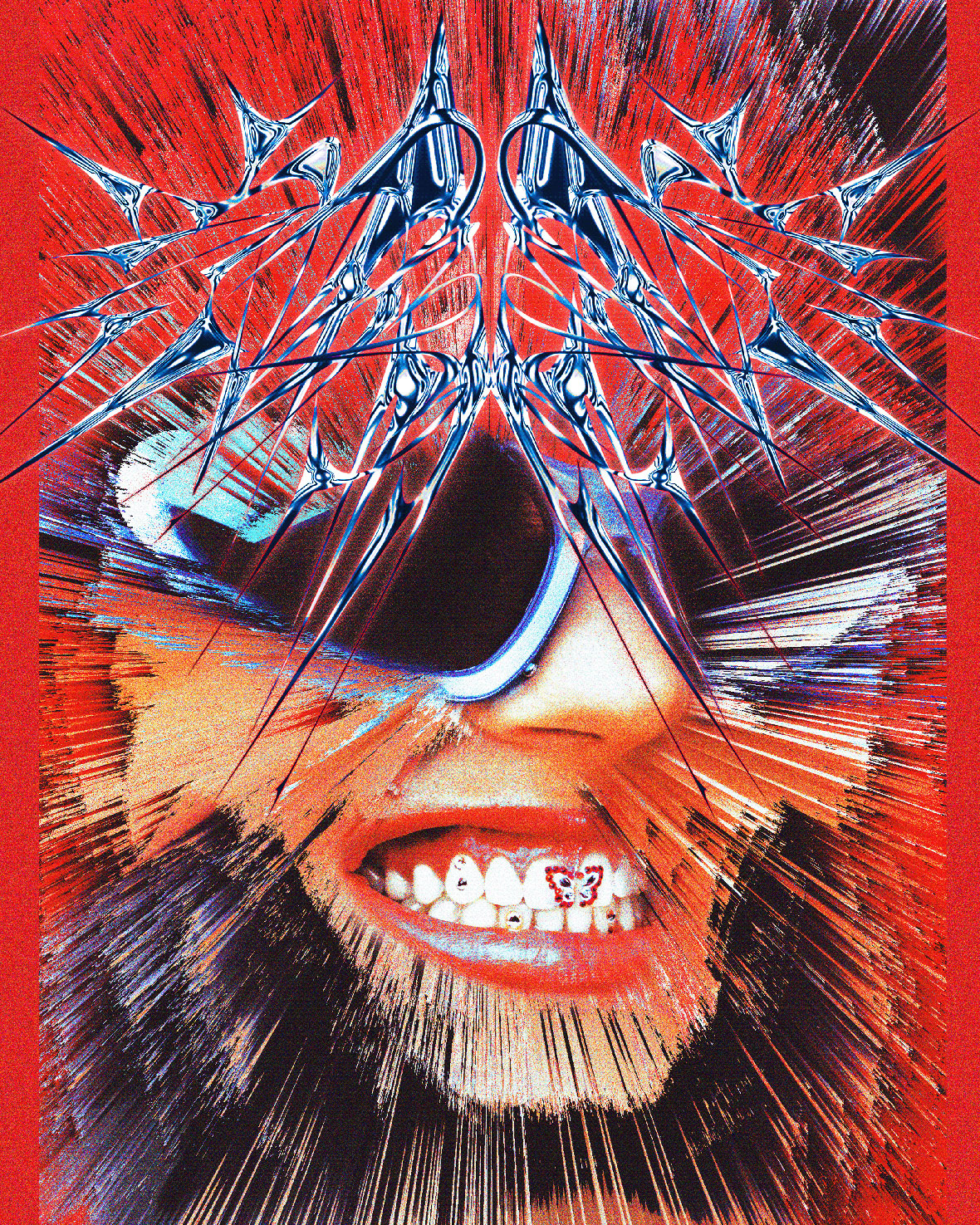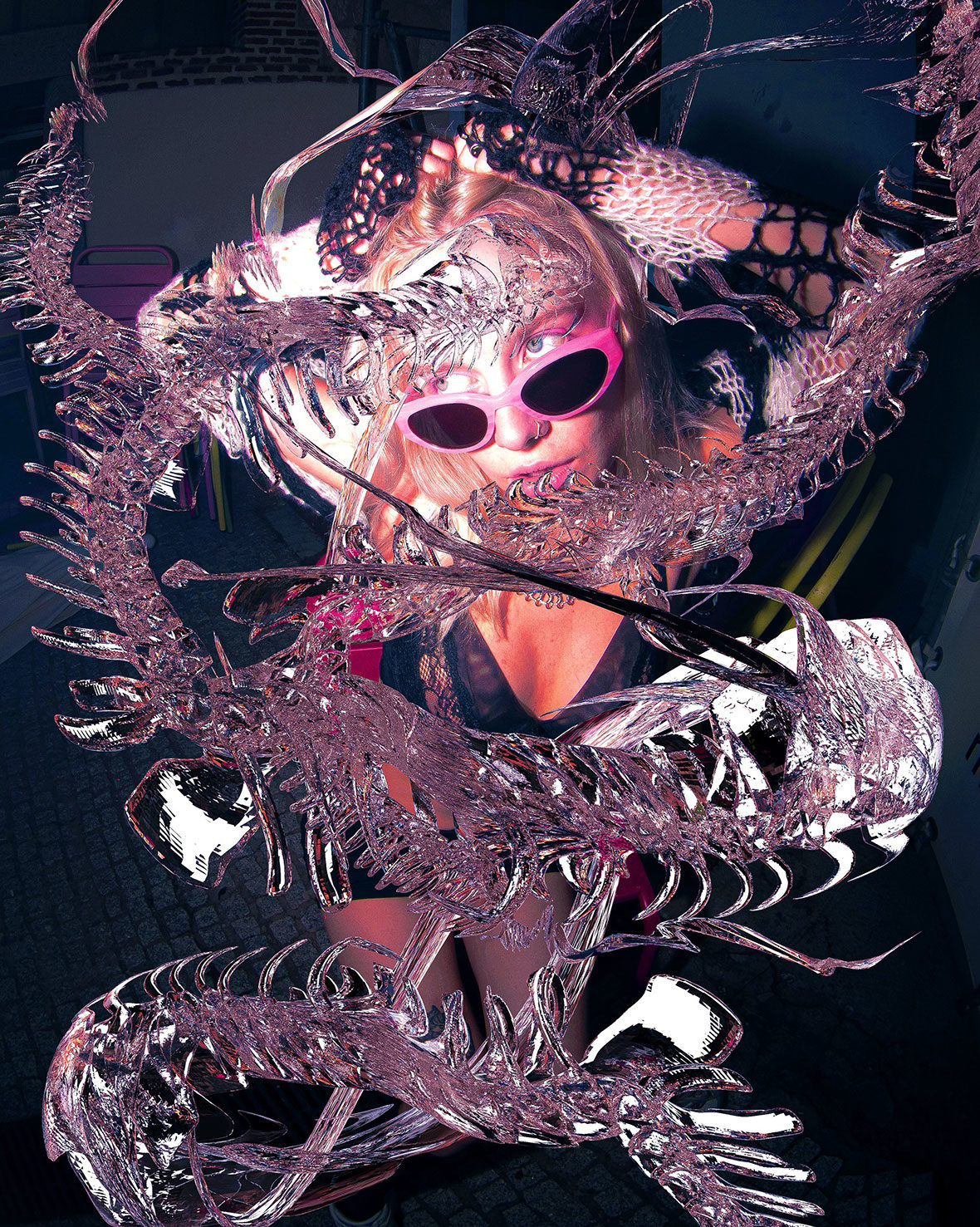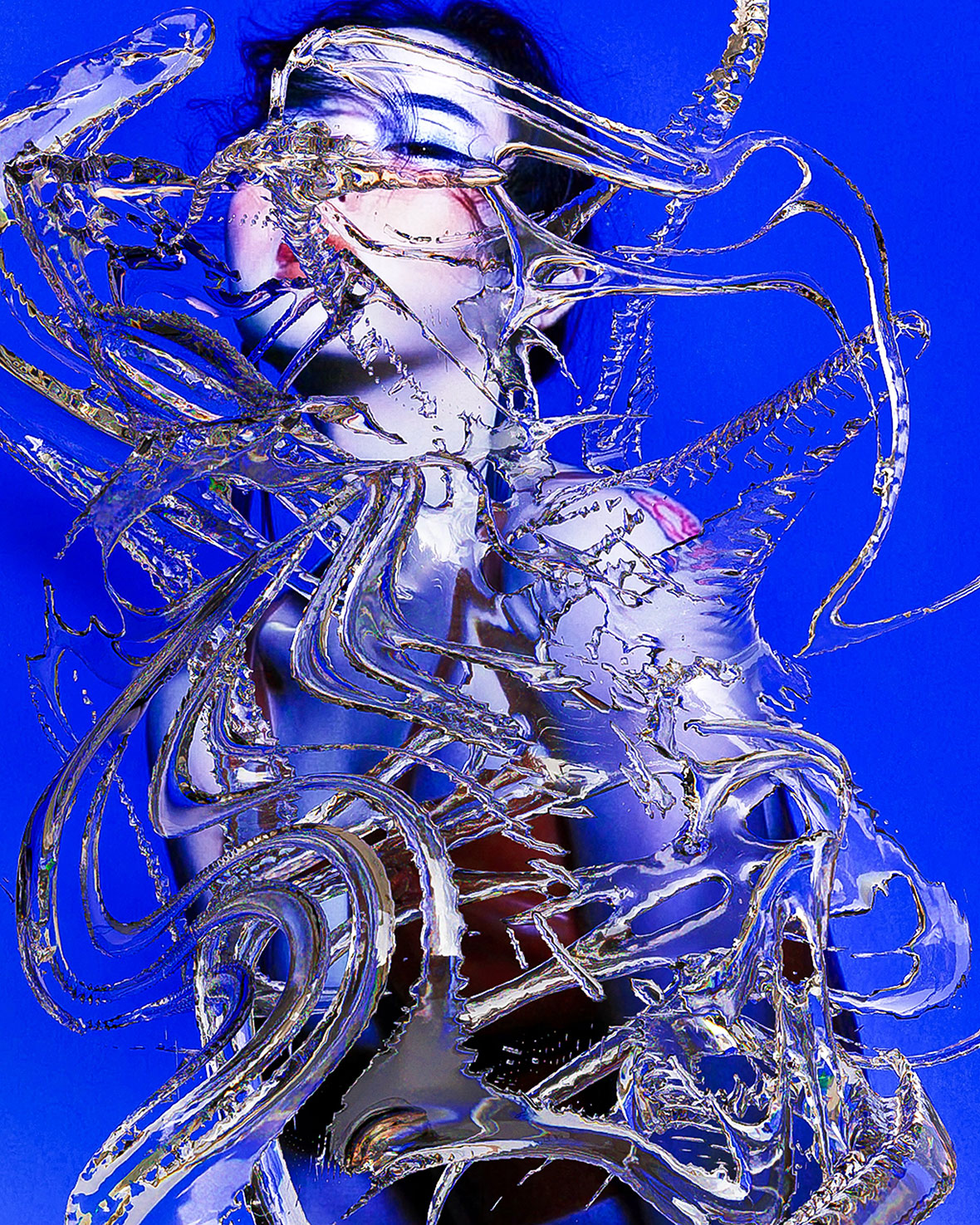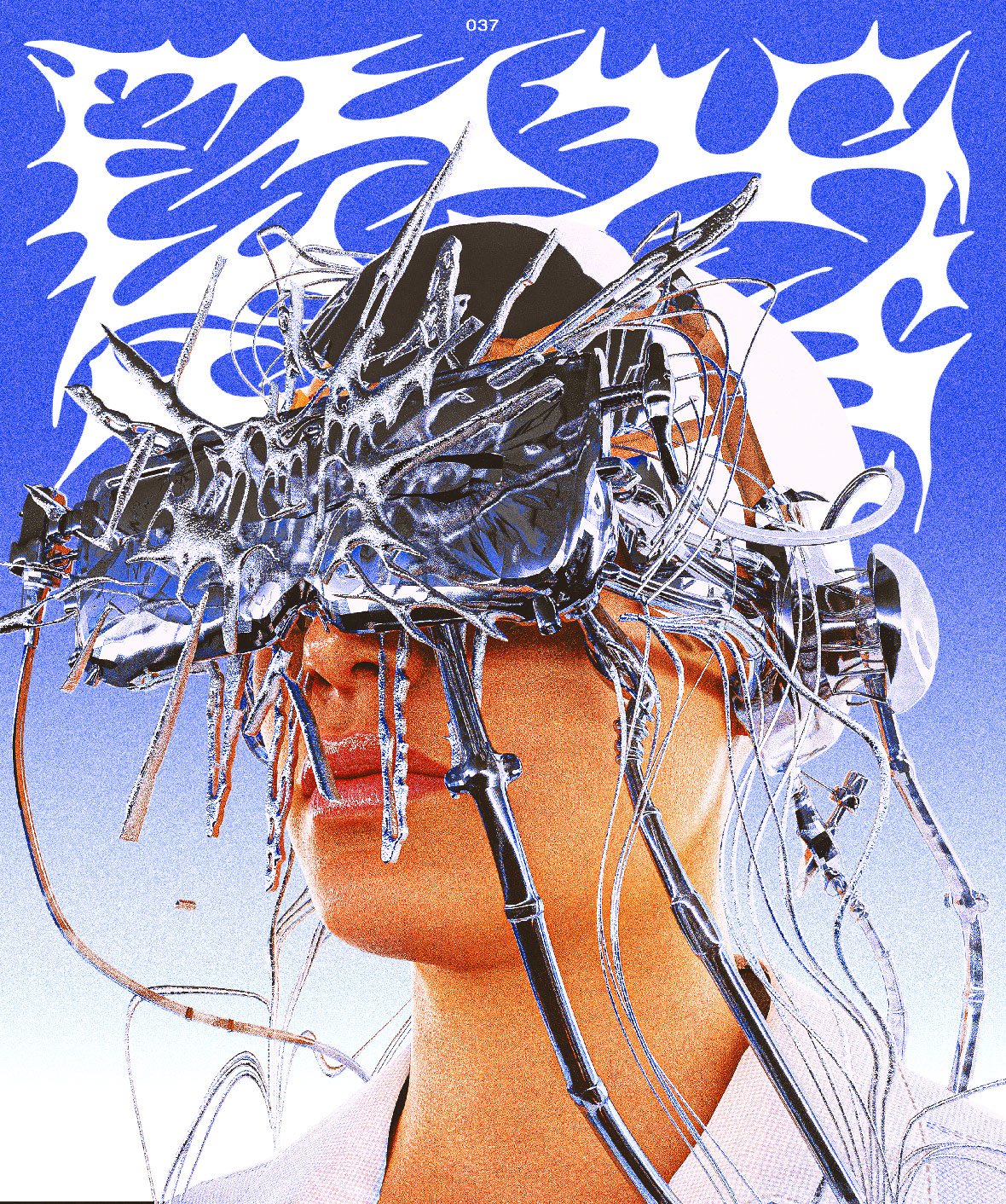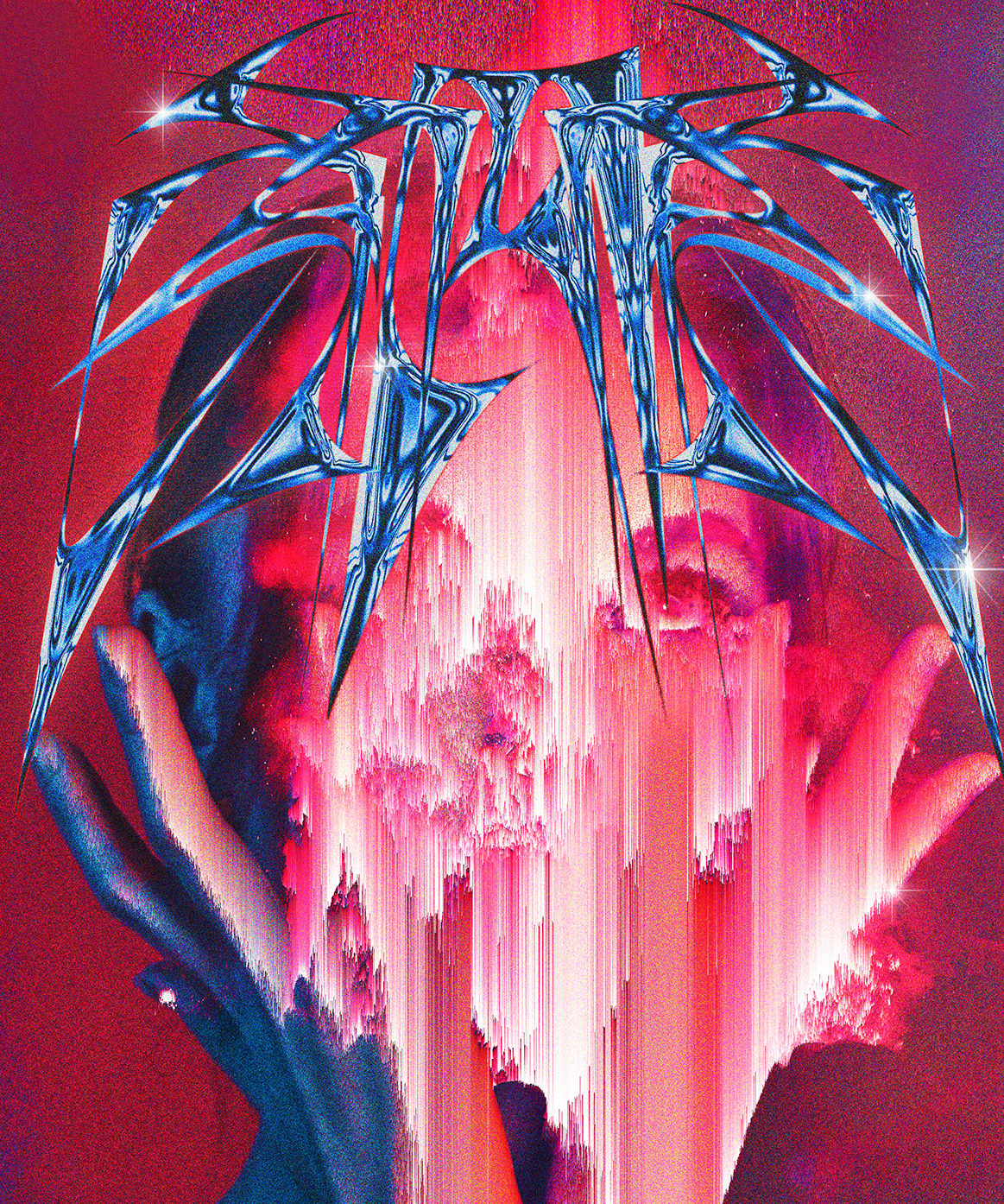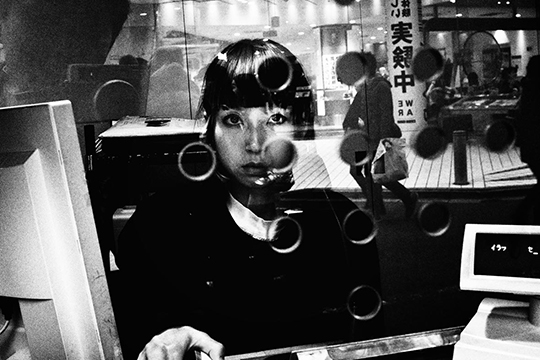
A dense web of blue wires swirls around a chromatic mesh, forming the outline of a human face. Around the edge, a sharp digitized logo resembling a metal album frames the piece. The piece resembles a data visualization, depicting how it might look if the wealth of human knowledge were to coalesce into a new conciseness born to the cloud. This is the work of Sol Whi Park, a young Korean artist whose style rests on the main trends of the digital artist community but stands out for its substance, personality, and care.
Park, who goes by the moniker Visualocto online, infuses his work with overwhelming saturation, rich textures, and tangible depth. He turns experiments with chrome typefaces, skeletal design motifs, and glitch art into arresting pieces that outpace the wealth of similar artists suggested by tunnel vision-prone algorithms.
密集的蓝色线条旋转编制成彩色的网,抽丝剥茧出人物的面庞,锋利的金属字体修饰两旁。这幅像是由数字可视化技术完成的作品,描绘出人类智慧汇聚在云端的样子。作者是年轻的韩国艺术家朴乺辉(Sol Whi Park),他的创作立足于当代数字艺术浪潮,但又以其背后内涵、个人风格以及人文关怀在一众作品中脱颖而出。
朴乺辉在社交媒体上以 Visualocto 自居。他的作品与那些拘泥于算法创作的同类艺术家完全不同,以吞没式的高饱和度、丰富纹理和几近逼真的立体造型为特点,融合了实验性质的彩色字体、骷髅图案和故障艺术(Glitch Art)元素,往往令观众看得入迷。
Online creative communities revolving around popular trends are what drew Park to art in the first place. He says he used to doodle on schoolwork as a kid but had no real interest in art. In fact, he was prone to sleeping in art class. Exploring the new features of smartphones and tablets was more to his tastes. But the chance discovery of designer Olly Moss on Tumblr five years ago inspired him to give digital art a try, so he learned Photoshop and Illustrator through Youtube tutorials. When he discovered the Glitch Artists Community, he fully realized art that could be much more than just paintings on canvas.
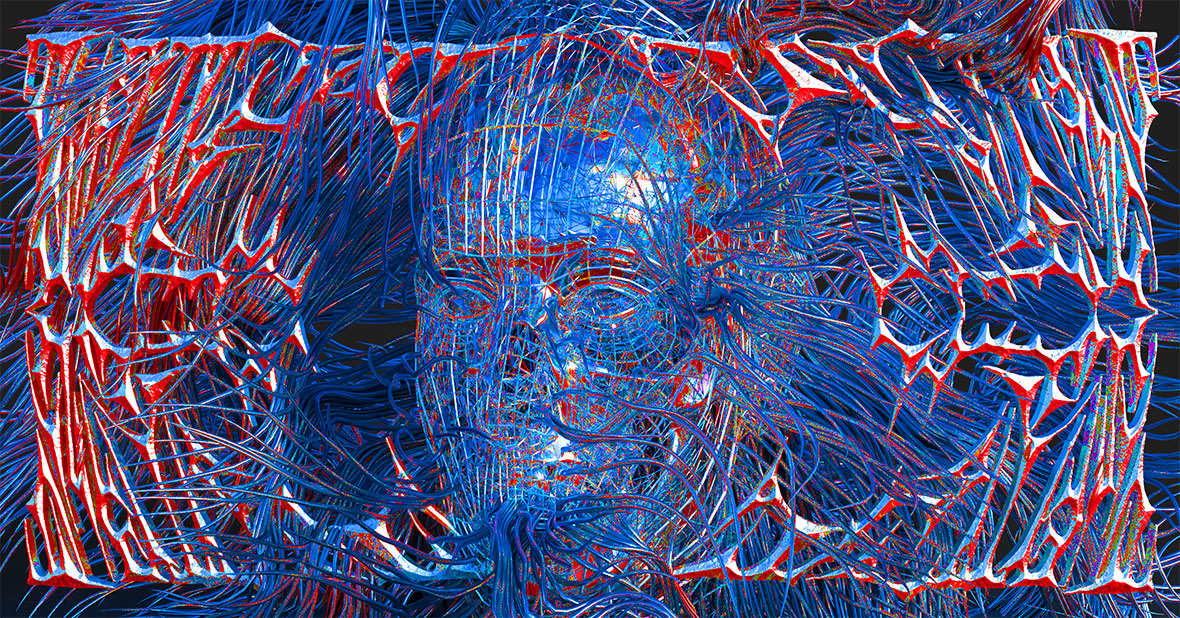
“There are no galleries or museums where I’m from in Incheon,” Park says. “To this day, I still have to travel to Seoul to see art shows and graffiti. That might be why I gravitate to digital art in the first place.” He points out that while there’s a lot of attention paid to teaching fine and traditional arts in Korea, digital art is overlooked in the education system. “I was never exposed to it before, so when I found it, it felt so new and fresh to me.”
朴乺辉聊道:“我住在仁川,这里没有画廊和博物馆,即使现在,看艺术展和涂鸦作品还得跑到首尔。这可能是我最初对数字艺术如此感兴趣的原因。”他指出,韩国的教育很注重美术和传统艺术的教学,却忽视了数字艺术教育,“我以前从未了解过这种艺术形式,所以一开始就感觉特别新鲜和好奇。”
Park started his two years of mandatory military service in 2020, living on a base that he couldn’t leave because of COVID-19. And he wasn’t able to create art due to software restrictions on his military laptop. But he could use his phone, and he watched as his friends and the scenes he was involved with progress without him on social media. “It was harsh.” When he finished service this May, he immediately jumped into new programs like Blender, C4D, and Maya.
2020 年,朴乺辉开始服兵役,为期两年。因为疫情,他不得不一直留守在部队,不得离开。而军队的笔记本电脑对下载软件有限制,因此无法保持艺术创作。唯一了解外面世界的途径就是手机,只能在社交媒体上眼睁睁地看着外界不断变化的一切,“感觉糟透了”,他感慨道。今年五月服役结束后,他立刻开始了 Blender、C4D和 Maya 等新型创作软件的学习。
“Glitch art was restrictive because you’re limited by the images you’re altering, but there are no limits with these programs,” Park says. “You can create whatever you can imagine.” He still works with photos—sometimes his own and other times collaborating with a photographer—but now his options are much broader. He learned C4D quickly, which he says was very similar to a program he used in the military for 3D designing. You can see the change in style and quality on his feed clearly; the month he was finished it was like he became a brand new artist.
To create a piece, Park draws super rough sketches on paper, then he downloads objects or sculpts them himself in C4D, filling out the details in Blender. “I saturate my colors to levels that Photoshop has trouble handling,” he laughs. ” I want them to pop, but it affects the shaders, shadows, and lighting so it’s hard to control.”
“故障艺术具有一定限制,基于创作的图片本身就会限制你,但软件的使用能让你摆脱这些限制,” 朴乺辉说道,“你可以创造任何你能想象到的东西。”
以前,他仍会以图片作为每次创作的基础,有时是他自己拍摄的照片,有时则是与其他摄影师合作完成的照片。不过在学会了 C4D 软件之后,他的创作素材变得更多。从他最近发表的作品不难看出创作风格上的明显变化。结束兵役的一个月后,他的创作仿佛完全摆脱了此前的限制,尝试突破想象力的边界。
创作时,朴乺辉通常会先在纸上画出粗略草图,然后下载素材或自己在 C4D 中建模,之后再转到 Blender 软件中补充所有细节。“我的色彩饱和度会高到 Photoshop 都难以处理的程度,”他笑着说,“我希望作品能足够抢眼,因此有时候着色器、阴影和光线等处理很难把握。”
Recently his work was featured in a monthly group show in Dubai called Project 22, where they displayed artwork in a circular room with a wrap-around screen and reflective floor and ceiling. The show was many firsts for Park. It was his first exhibit, the first time his work had been seen outside the internet, and his first NFT. The show’s theme was sustainability, which Park found ironic since cryptocurrencies have been notorious for carbon emissions: “I think NFTs have been great for artists and they’re one of the reasons digital art is so exciting right now, so I’m really hoping for a more environmentally friendly approach.”
最近,他的作品在迪拜一个名为 Project 22 的月度群展中展出。展厅为一个圆形房间,四周环绕屏幕,还设有反光地板和天花板。这是朴乺辉的第一次展览,也是他第一次将作品以线下形式公示于众,成就了他的第一个 NFT 系列。
可持续发展,是贯穿朴乺辉作品的主题。这对他来说略显讽刺,因为加密货币本身一直被指责造成了严重的碳排放问题(据统计,比特币挖矿每年会排放二十兆吨二氧化碳,相当于爱尔兰一个国家的碳排放量),“我认为 NFT 对艺术家来说是一件好事,也是数字艺术如此令人期待的原因之一,所以我相信之后定会出现更环保的解决办法。”
Like our stories? Follow us on Facebook and Instagram.
Instagram: @visualocto
Contributor: Mike Steyels
Chinese Translation: Olivia Li


